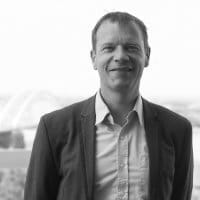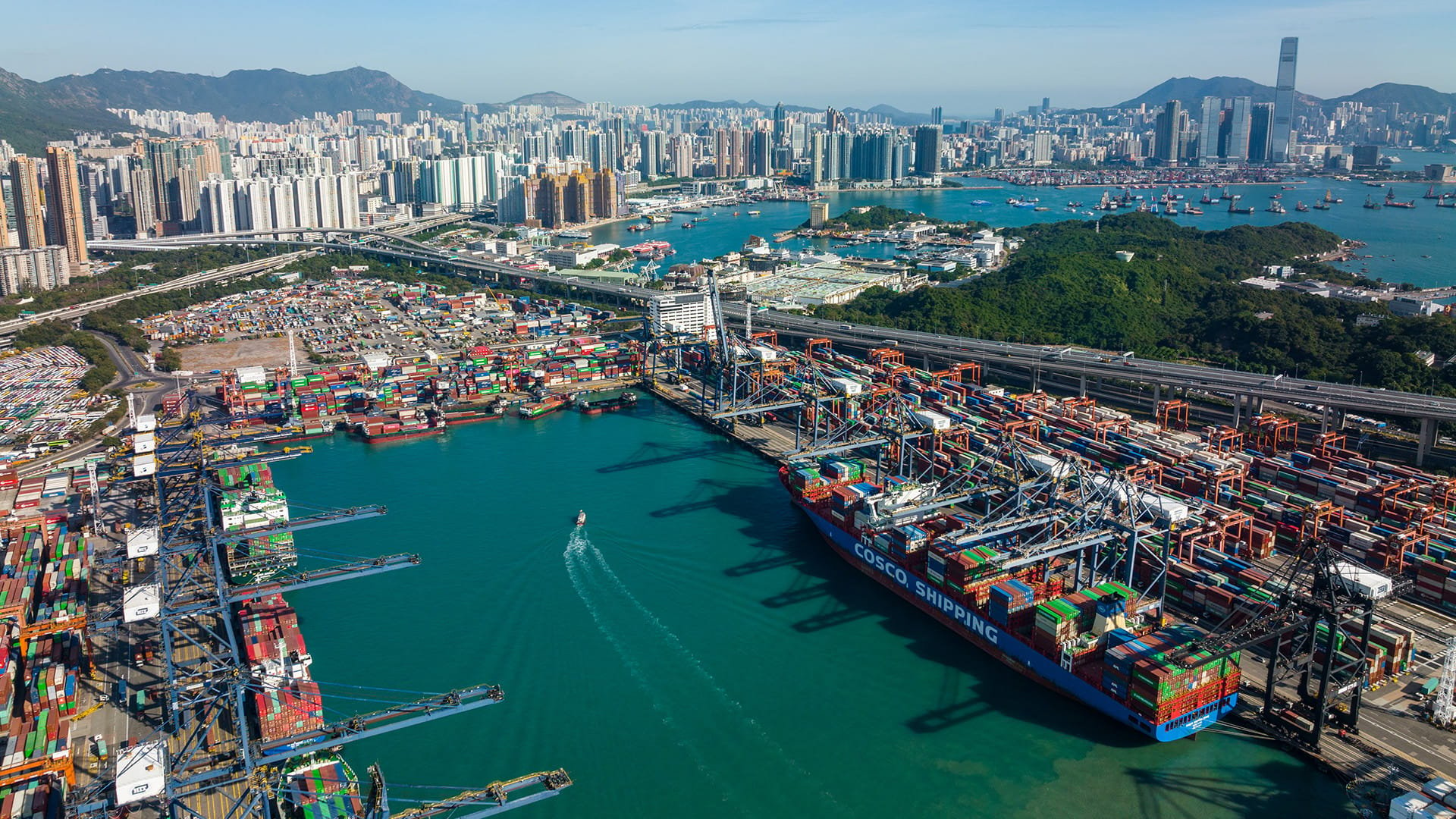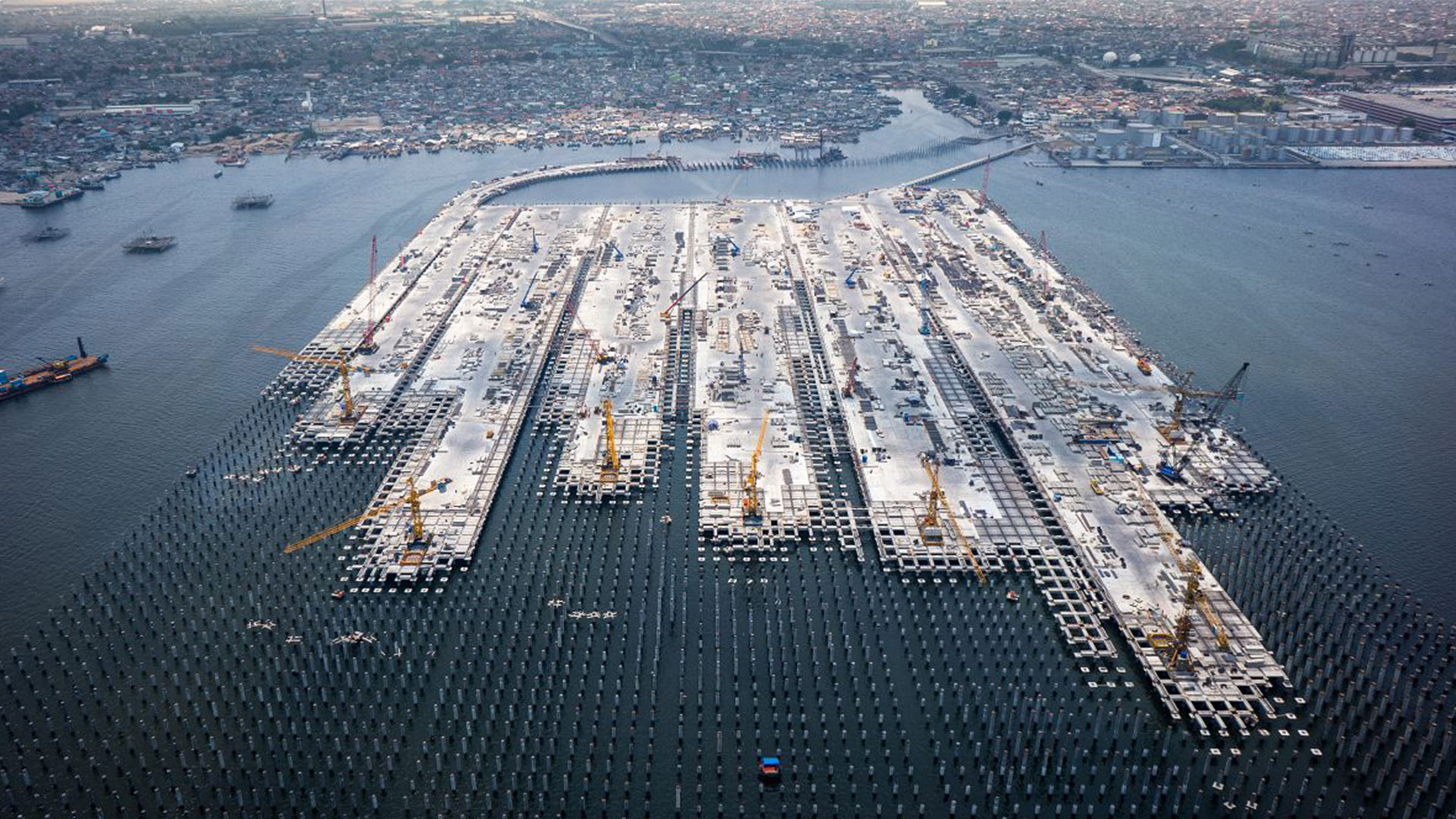A new coastal city built on reclaimed land from the sea

Copyright: South Energyx Nigeria Limited (SENL)
Project facts
- ClientSouth Energyx Nigeria Limited
- LocationVictoria Island, Lagos, Nigeria
- Date2004 - ongoing
- ChallengeProtecting Lagos against rising sea levels, while enabling continued growth and expansion
- SolutionA new city, with effective flood defences, built on land reclaimed from the sea
The challenge: preventing coastal erosion while enabling land expansion
Lagos is the largest city in West Africa, and the commercial and financial centre of Nigeria. It has over sixteen million inhabitants, and current estimates suggest the population will continue to grow by 275,000 inhabitants per year.
The city needs to expand to keep up with its growing population, but the edge of the Atlantic Ocean leaves little room for growth.
While the Lagos Lagoon, for example, is protected from the very strong surges of the Atlantic Ocean due to its covered nature by Victoria Island, Lagos Island and Lekki Coastal area, the actual ocean facing coastline is only two meters above sea level and prone to direct impact of ocean swells and tides.
Historical maps show that, about a century ago, the city’s coastline once extended almost three km into the Atlantic, but erosion has caused parts of the coastline to collapse into the sea, increasing the risk of flooding.
The Lagos State Government (LASG) decided to find a sustainable and permanent solution to prevent further coastal erosion, which would also resolve the current land shortage in the city and enable further expansion.
The solution: a new coastal city built on land reclaimed from the sea
In response, the LASG and South Energyx Nigeria Limited (SENL) developed Nigeria International Commerce city – also known as Eko Atlantic. It’s a new coastal area to be built as an extension to Victoria Island, Lagos.
The new city, with flood defences including breakwater revetment structures, will be built on land reclaimed from the sea, and when complete will be 10 km2 – the size of Manhattan’s skyscraper district. It will have a waterfront, an efficient transport system, high-quality infrastructure with commercial and residential accommodation, and leisure facilities.
LASG and SENL began feasibility studies in 2004, with Royal HaskoningDHV providing consultancy and supervision for the marine works. We were responsible for the concept design, detailed marine designs, numerous hydrology and hydraulics studies, and the environmental impact assessment of the dredging and reclamation works.
In 2008, we provided a state-of-the-art masterplan, which set guidelines for the development, and provided a resilient and adaptable solution to mitigate the effects of climate change.
The plan detailed the 95 million m3 of reclamation sand fill needed to build the city, and the construction of the heavy and rigid breakwater sea wall to protect it from coastal erosion and flooding.
“After extensive discussions with SENL, we decided it would be more appropriate to construct a sea defence structure on the line of the original coastline of 1905 rather than where the sea had advanced,” said Geert Hendriks, Project Director at Royal HaskoningDHV.
We designed the sea wall revetment as a great amenity for the new city. It functions as both an esplanade and resilient coastal protection.
The result: long-term protection for 250,000 new residents
We are providing land reclamation supervision services and coastal protection advise – assiting the client to steer the project efficiently and with the necessary flexibility.
In June 2023, two third of the land has been reclaimed, with over 75 million m3 of sand deposited to form Eko Atlantic. So far, it has a land area of over 6.5 million m2 and a sea defence structure of about 7 km long.
Once completed, the “Great Wall of Lagos” will be 8.4 km long and retain the 95 million m3 of sand that forms the foundation of the city.
The revetment will protect the city – and its planned 250,000 new residents and 150,000 daily commuters – from coastal erosion and flooding, and enable Lagos to continue to expand.




